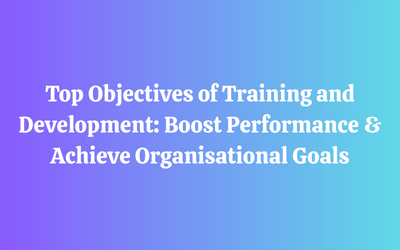Frontline Training 8 Best Practices
The way firms run today has undergone a paradigm shift. Traditional procedures have been modified, and new technologies have been implemented to compete in the post-covid era of continual innovation. Although being at the forefront, frontline workers regrettably do not receive the frontline training they require to prosper and advance.
The frontline team needs on-the-spot attention and learning opportunities because they are the company’s face to the customer. With the right frontline training and development opportunities in place, your employees will have the knowledge and tools needed to be successful.
Effective frontline training will help reduce the rate of attrition.
Throughout the “great attrition,” there has been a significant increase in the number of frontline employees resigning due to job dissatisfaction.
It would be tedious to repeat the process after spending time on hiring and introducing your scattered personnel to your services and procedures. You end up losing time, productivity, and important resources when the employee decides to leave the organization.
Moreover, frontline workforce turnover even harms the customer experience. To lower attrition and provide the highest level of customer satisfaction, it is crucial to locate and close any gaps where frontline training is required.
Effective frontline training, upskilling, and reskilling will strengthen your frontline.
Frontline workers carry out various business agendas and strategies on the ground. To make the most of this priceless resource, it is essential to upskill and reskill them in real time.
It’s crucial to evaluate how you will get the learning and training materials to the frontline when thinking about upskilling and reskilling your frontline staff.
The majority of frontline employees are on the job; it can be difficult for them to carve out extra time to return to the office and concentrate on their development. So it is pivotal to connect to a platform that can make frontline training part of the employees’ work routine.
8 best practices for frontline worker training
Your frontline requires real-time training, upskilling, and reskilling to excel at your job and take up new responsibilities. For more information on frontline workforce development, we spoke with several CLO, HR, and Learning & Development teams.
Based on the data, these are the 8 recommended methods to make your frontline personnel future-ready.
1. Well-planned, speedier onboarding
Incomplete, out-of-date, or ambiguous instructions will inevitably perplex the new employee. Whether they are factory executives or delivery people, they all need a clear road map to get up to speed quickly. To save time and aid the frontline in developing the confidence and skills necessary to do their jobs effectively, an effective onboarding process is essential. Employees who have the good product knowledge and understand how things function in an organization can add value and contribute to its growth.
Well-structured onboarding is a frontline training best practice that is even more crucial for businesses having multiple branches. It’s crucial to give new frontline employees from various branches the same onboarding experience. Modern learning solutions are renowned for their impactful onboarding capabilities in addition to their upskilling capabilities. For instance, you can design a five-day drip onboarding journey using Stratbeans.
Using sophisticated insights like productivity score and skill score, you can identify the time-to-productivity of the frontline and take real-time efforts to lower it.
2. KPI-based coaching
KPI-based coaching is the greatest approach to measure if the frontline is on the correct track. First, you identify the role of the learner. then map KPIs according to the role, and then link them back to modules/skillsets that will support his KPIs. The manager is alerted when the employee falters or falls behind in meeting his goals, and he is then given additional coaching to get him back on track.
Currently, you’ll find an advanced functionality in LXP where you can define a goal value to track the KPI. This can provide an early warning so that the coach can intervene to close the performance gap. No matter how big your team is, you can easily see the KPI score for each team member on the learner’s dashboard. Poor performance can serve as a warning sign to intervene and offer timely coaching. The majority of LXPs even offer a thorough history so that frontline training can be planned following employee areas for strength and improvement.
3. Multilingual content
Most of the employees avoid frontline training and upskilling programs because they don’t understand the language. Maximum frontline employees live in tier 2 or 3 cities where regional language work best. If the same learning programs are presented in their local language, they will likely engage with it.
So opt for a learning solution that supports multi-lingual content. Make sure you limit the use of jargon and wordplay while creating courses in different languages. Try to make the learning programs as simple as possible so the frontline can easily understand.
4. Microlearning
One of the best ways to integrate frontline training into the daily routine of the workforce is through microlearning.
They can conveniently learn at any time of the day through short, engaging content. For instance, the retail sales representative can easily consume knowledge nuggets during the afternoon when a few customers are entering the store.
Through micro-learning, you can easily bring a new business practice or industry trend to the front lines and keep them up to date.
5. Mobile learning
The frontline is your company’s heart. As a result, they must correctly complete their daily tasks. The company’s reputation can be jeopardized by its actions. However, because they are on the field, they require a tool that works with their schedule. You can improve your frontline training efforts by utilizing cutting-edge tools rather than outdated training methods.
Portable learning is one such arrangement that can assist the appropriate labor force with learning in a hurry. With a wide cluster of courses readily available, cutting edge can undoubtedly take a course at their helpful time. The cycle of learning and forgetting can be broken with mobile learning. Forefront can easily discover some new information and apply it to work. The frontline can keep up with the changing market and company trends by taking a variety of mobile courses.
6. Gamification
Several businesses are interested in gamification. In its reward app, Starbucks uses gamification to require customers to earn points to claim prizes. The significant gamification system can be involved even in figuring out how to draw in your forefront workers.
Frontline training can be fun for your employees through gamification. Using a single platform, you can bring your distributed workforce together for interactive sessions. You can test their product knowledge or determine who is aware of current industry trends by using a roulette wheel or a quiz. You can encourage your frontline workers to work harder by creating leaderboards that encourage healthy competition.
7. Blended learning
The frontline cannot be served solely by conventional methods of training. Blended learning can aid in their overall development. The frontline can improve their skills with the right combination of classroom and self-paced learning. As an AI-powered learning solution, Stratbeans provides various levels of recommendations to your frontline. so that they can learn about the topics that interest them through their experience in frontline training. In addition, a single platform can accommodate multiple formats. A frontline worker, for instance, can watch a video, read a blog, listen to a podcast, and then take an assessment. Furthermore, the majority of the frontline team members lack adequate bandwidth. so they can download content quickly and access it offline.
8. Assessment-based instruction:
Are your training materials engaging your frontline employees? Are they getting value out of the educational resources you provide? Where in the learning journeys are the frontline employees?
Through in-depth analytics, you can get answers to these and a lot of other questions. When it comes to frontline training, creating a wide range of learning materials is not the end of the road. To boost your employees’ performance, you need to conduct an evaluation, monitor their level of proficiency, and then develop efficient learning programs.
Put frontline training into place for your valuable employees.
One of the biggest pharmacy retail chains knows how important frontline training is, so they put the best skilling suite into place to grow their distributed workforce. They were able to keep their frontline employees up to date on essential skills thanks to this.
The frontline can play a role in the expansion of your business if they are given the proper attention. Therefore, with effective on-the-job training, try to establish a culture of continuous learning for your frontline employees.
You can transform your skilling journey with the help of Stratbeans, an all-in-one skilling suite. You can effectively onboard, reskill, and upskill your frontline employees with its extensive features. You can personalize learning for your frontline team and encourage them to learn new skills with this AI-powered solution.
You can improve your learning and development by identifying areas for improvement with the help of this user-friendly tool’s in-depth analytics.
Stratbeans can provide the best of both worlds, whether you’re looking for a frontline experience platform or a frontline learning management system. Experience Stratbeans in action and view a preview to learn how it works.
Learn More
Our News
- AI
- Animations
- Articulate
- Articulate 360
- Articulate Engage
- Articulate Live
- Articulate Presenter
- Articulate Quizmaker
- Articulate Replay
- Articulate Review
- Articulate Storyline
- Articulate Storyline 3
- Articulate Studio
- bite sized learning
- Characters
- Content Library
- Corporate Communication
- E-Learning
- e-Learning Authoring Tools
- Employee Engagement
- Game-Based Learning
- Gamification
- Gamiflexer
- Go Sales
- Healthcare
- Instructional Design
- Interactivity
- Knowledge Transfer
- L&D Trends
- Learning
- Learning & Development
- Learning Experience platform
- Learning Management System
- LMS
- LXP
- Microlearning
- mLearning
- Mobile Learning
- Nugget Learning
- Online Training
- Peek
- Performance Support
- Preso
- Quiz and Assessment Platform
- Replay 360
- Rise
- SCORM
- Screen Capture
- Software
- Storyline 360
- Studio 360
- Training Management
- Trainings
- Uncategorized




